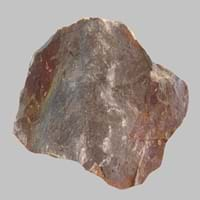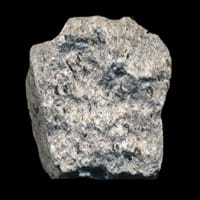Definition
Hawaiite is volcanic rock that resembles basalt. It is an olivine basalt with intermediate composition between alkali olivine and mugearite
Porphyry is a reddish-brown to purple igneous rock containing large phenocrysts of various minerals embedded in a fine-grained matrix
Origin
Hawaii Islands
Egypt
Discoverer
Joseph Iddings
Unknown
Etymology
From Hawaii Islands
From Old French porfire, from Italian porfiro and in some cases directly from Latin porphyrites
Class
Igneous Rocks
Igneous Rocks
Sub-Class
Durable Rock, Medium Hardness Rock
Durable Rock, Hard Rock
Other Categories
Opaque Rock
Fine Grained Rock, Opaque Rock
Texture
Glassy, Massive, Porphyritic, Scoriaceous, Vesicular
Porphyritic
Color
Black, Brown, Light to Dark Grey
Black, Brown, Colourless, Green, Grey, Red, Rust, White
Durability
Durable
Durable
Scratch Resistant
Yes
Yes
Appearance
Dull and Soft
Dull
Interior Uses
Decorative Aggregates, Floor Tiles, Flooring, Homes, Hotels, Interior Decoration, Kitchens
Decorative Aggregates, Interior Decoration
Exterior Uses
As Building Stone, As Facing Stone, Paving Stone, Garden Decoration, Office Buildings
Garden Decoration, Paving Stone
Other Architectural Uses
Curbing
Curbing
Construction Industry
As Dimension Stone, Cobblestones, Rail Track Ballast, Roadstone
Construction Aggregate
Medical Industry
Not Yet Used
Not Yet Used
Antiquity Uses
Artifacts
Artifacts, Monuments, Sculpture
Commercial Uses
Creating Artwork, Sea Defence
Creating Artwork, Gemstone, Jewelry
Types
Not Available
Rhomb Porphyry
Features
Has High structural resistance against erosion and climate, Very fine grained rock
Generally rough to touch, Is one of the oldest rock, Surfaces are often shiny
Archaeological Significance
Famous Monuments
Easter Island in the Polynesian Triangle, Pacific Ocean
Data Not Available
Sculpture
Not Yet Used
Used
Famous Sculptures
Not Applicable
Data Not Available
Pictographs
Used
Not Used
Petroglyphs
Used
Not Used
Figurines
Not Yet Used
Used
Formation
Hawaiite is a fine-grained, hard rock that forms when bits of lava shoot out of volcanoes and reach the Earth's surface.
Porphyry is formed in two stages: the magma cools slowly deep within the crust or the magma is cools rapidly as it erupts from a volcano, creating small grains that are usually invisible to naked eye.
Mineral Content
Olivine, Plagioclase, Pyroxene
Biotite, Chert, Feldspar, Garnet, Graphite, Quartz, Silica
Compound Content
Aluminium Oxide, CaO, Iron(III) Oxide, FeO, Potassium Oxide, MgO, MnO, Sodium Oxide, Phosphorus Pentoxide, Silicon Dioxide, Titanium Dioxide
Aluminium Oxide, CaO, Iron(III) Oxide, Potassium Oxide, MgO, Sodium Oxide, Silicon Dioxide, Titanium Dioxide
Types of Metamorphism
Impact Metamorphism
Burial Metamorphism, Cataclastic Metamorphism, Contact Metamorphism, Hydrothermal Metamorphism, Impact Metamorphism, Regional Metamorphism
Types of Weathering
Biological Weathering
Biological Weathering, Chemical Weathering, Not Registered
Types of Erosion
Not Applicable
Chemical Erosion, Coastal Erosion, Glacier Erosion
Grain Size
Not Applicable
Fine Grained
Fracture
Conchoidal
Irregular
Streak
Not Available
White
Porosity
Less Porous
Less Porous
Luster
Not Available
Dull
Compressive Strength
Not Available
Cleavage
Not Applicable
Imperfect
Toughness
Not Available
1.7
Specific Gravity
Not Available
2.5-4
Transparency
Opaque
Translucent to Opaque
Density
Not Available
2.5-2.52 g/cm3
Resistance
Heat Resistant, Pressure Resistant, Wear Resistant
Heat Resistant, Impact Resistant
Deposits in Eastern Continents
Asia
India, Russia
China, Kazakhstan, South Korea, Thailand, Turkey, Vietnam
Africa
South Africa
Egypt, Ethiopia, Ghana, South Africa
Europe
Iceland
Finland, France, Germany, Great Britain, Hungary, Iceland, Ireland, Italy, Netherlands, Norway, Romania, Sweden, Switzerland
Others
Hawaii Islands
Greenland
Deposits in Western Continents
North America
Canada, USA
Canada, Cuba, Jamaica, USA
South America
Brazil
Bolivia, Brazil, Colombia, Ecuador, Paraguay
Deposits in Oceania Continent
Australia
Not Yet Found
New South Wales, New Zealand, Western Australia
Hawaiite vs Porphyry Characteristics
Though some rocks look identical, they have certain characteristics which distinguish them from others. Characteristics of rocks include texture, appearance, color, fracture, streak, hardness etc. Hawaiite vs Porphyry characteristics assist us to distinguish and recognize rocks. Also you can check about Properties of Hawaiite and Properties of Porphyry. Learn more about Hawaiite vs Porphyry in the next section. The interior uses of Hawaiite include Decorative aggregates, Floor tiles, Flooring, Homes, Hotels, Interior decoration and Kitchens whereas the interior uses of Porphyry include Decorative aggregates and Interior decoration. Due to some exceptional properties of Hawaiite and Porphyry, they have various applications in construction industry. The uses of Hawaiite in construction industry include As dimension stone, Cobblestones, Rail track ballast, Roadstone and that of Porphyry include Construction aggregate.
More about Hawaiite and Porphyry
Here you can know more about Hawaiite and Porphyry. The life cycle of a rock consists of formation of rock, composition of rock and transformation of rock. The composition of Hawaiite and Porphyry consists of mineral content and compound content. The mineral content of Hawaiite includes Olivine, Plagioclase, Pyroxene and mineral content of Porphyry includes Biotite, Chert, Feldspar, Garnet, Graphite, Quartz, Silica. You can also check out the list of all Igneous Rocks. When we have to compare Hawaiite vs Porphyry, the texture, color and appearance plays an important role in determining the type of rock. Hawaiite is available in black, brown, light to dark grey colors whereas, Porphyry is available in black, brown, colourless, green, grey, red, rust, white colors. Appearance of Hawaiite is Dull and Soft and that of Porphyry is Dull. Properties of rock is another aspect for Hawaiite vs Porphyry. The hardness of Hawaiite is 6 and that of Porphyry is 6-7. The types of Hawaiite are Not Available whereas types of Porphyry are Rhomb Porphyry. Streak of rock is the color of powder produced when it is dragged across an unweathered surface. The streak of Hawaiite is not available while that of Porphyry is white. The specific heat capacity of Hawaiite is Not Available and that of Porphyry is Not Available. Depending on the properties like hardness, toughness, specific heat capacity, porosity etc., rocks are resistant to heat, wear, impact, etc.Hawaiite is heat resistant, pressure resistant, wear resistant whereas Porphyry is heat resistant, impact resistant.





